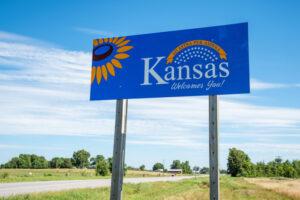Saudi Arabia is a country bejeweled with expansive deserts, ancient cities, and a rich cultural heritage—a hotchpotch for visitors venturing onto the Arabian Peninsula. All this tells the story of a fabled kingdom with traditions stretching from the busy streets of Riyadh to the tranquility of the Empty Quarter. We start the journey right to the very heart of Saudi Arabia to discover cultural treasures that make up this country’s interest in travel. For those seeking to explore the kingdom’s spiritual and historical sites, the Haramain train offers a convenient and efficient way to travel between the holy cities of Makkah and Madinah, enhancing the experience of discovering Saudi Arabia’s cultural tapestry.
Riyadh: The Modern Metropolis
This post may contain affiliate links. Please see our disclosure.

The journey begins in Riyadh, the capital city, where modernity meets tradition. Leading the skyline among the skyscrapers, one of the main attractions is the symbolic Kingdom Centre, which includes a sky bridge to view the city. Giving an entire summary of the history of Saudi Arabia, including all prehistoric ages up until the current history of the country, there is the National Museum.
To get a feel of traditional Saudi life, Al Masmak Fortress and the bustling Deira souks are some of the main characteristics that give an outlook of this country’s heritage. In a country known for its vast deserts and traditional modes of travel, the introduction of high-speed trains marks a significant leap towards modernity, offering a new and efficient way to explore the diverse landscapes and cities of Saudi Arabia.
Jeddah: Gateway to the Red Sea
Jeddah, the kingdom’s commercial hub, is renowned for its vibrant atmosphere and historic architecture. The old city’s quarter, the Al-Balad, is a UNESCO World Heritage Site with buildings that are characterized by intricately carved wooden windows and coral stone. Jeddah Corniche is another location of major relaxation and leisure activities with beautiful waterfronts and modern sculptures. The King Fahd Fountain, the tallest of its kind in the world, adds to the city’s allure.
Makkah and Madinah: The Spiritual Heartlands

Makkah and Madinah are the spiritual epicenters of the Islamic world, attracting millions of pilgrims each year.
The holiest Islamic sites are the Grand Mosque in Makkah, which contains the Kaaba, and the Prophet’s Mosque in Madinah, where Prophet Muhammad is buried. Except for Muslims, the holy cities of historical and spiritual importance echo in the whole Islamic world—strictly forbidden to anyone else.
Al-Ula: An Archaeological Marvel
Al-Ula, a region in the northwest, is an open-air museum of ancient civilizations. Al-Hijr (Madain Saleh) has more than 100 tombs and reflects the same Nabatean kingdom as known at Petra in Jordan. It reflects the landforms of sandstone mountains and narrow canyons, which have been adding a magical charisma to the region.
Cultural events are hosted, and the presentation of the performance takes place at the newly built Maraya Concert Hall, which is a mirrored cube in the desert, designed to present Saudi Arabia’s tradition combined with modernity.
The Empty Quarter: A Desert Adventure The Rub’ al Khali, or Empty Quarter, is the largest continuous sand desert on the face of the earth. It rolls over a golden sea of dunes into a wilderness of beauty and adventure rarely visited by human beings. The landscapes of the desert vary greatly from towering dunes to completely flat expanses of salt; these provide an absolutely dramatic setting for camping, dune-bashing, and even stargazing. Bedouin tribes of the area, with their rich traditions of hospitality, let you experience the centuries-old nomadic way of life.
Saudi Cuisine: A Culinary Journey
Saudi cuisine mirrors the melting pot of cultural influences that penetrate this kingdom and mix the flavors of the Middle East with those of Asia and Africa. Kabsa: a standard dish, a rice dish, aromatic with nuts, raisins, and meat, found in Saudi households. Other traditional dishes are the Jareesh and Mutabbaq. A meal of stewed wheat, Jareesh is typically a dish made of Jareesh, while Mutabbaq is a pancake stuffed with an exotic filling. Dates, which are the symbols of Arab hospitality, are usually served with coffee as a gesture of welcome and friendship offered by the host to the guest.
The Coastal Charm of the Red Sea is that as it may, the coastline bordering Saudi Arabia’s Red Sea will be a not-so-secret-anymore for it will not have remained secret with its virgin beaches and active, vivacious coral reefs teeming with marine biodiversity for long.
The city of Jeddah, therefore, is the gateway to this underwater Eden, its diving and snorkeling equaling few places on Earth. The Farasan Islands harbor a marine sanctuary; it possesses mangroves, rare bird species, and historic ruins—anything that you would love to see in one of the best spots to come for ecotourism and discovering nature. From the Red Sea coast, the plans include luxury resorts and tourism projects, including the ambitious Red Sea Project, designed to market the natural beauty of the region while encouraging ecotourism.
Conclusion
Majestic landscapes, ancient heritage, and vibrant culture—this is Saudi Arabia, the country offering a unique experience to the one who dares to tread in its sands. From the modern towers of Riyadh to the holy mosques of Makkah and Madinah; from the archaeological wonders of Al-Ula to the serene beauty of the Red Sea coastline, this is indeed a collage of so many different experiences. Layers of richness to the journey that captures the heart and soul add cultural festivals and other culinary delicacies. In our last exploration of Saudi Sands, we’ve seen how the cultural tapestry in this kingdom is every bit as rich and beautiful as the designs woven into traditional carpets, luring travelers to a land that is at once ancient and evolving.
- Don’t Go to the Kentucky Derby – Why Horse Racing Is A Cruel Tradition - April 28, 2024
- Believe In Aliens? Visit These 7 Out Of This World Places - April 27, 2024
- 9 Weird Things To Do In Dublin, Ireland - April 13, 2024




